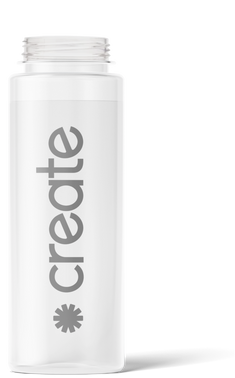Peak Performance Secrets: Harnessing Creatine For Hill Trekking
Explore the transformative benefits of creatine for hill trekking, amplifying strength, endurance, and peak performance on your ascents.
Creatine supplementation is essential as it helps increase endurance, athletic performance, and muscle growth. Creatine enhances hill trekking performance by increasing the availability of creatine phosphate in muscle cells, which serves as a rapid energy source during intense exercise. Creatine supplementation stands as a scientifically supported strategy for optimizing hill trekking performance. By augmenting phosphocreatine stores within muscle cells, creatine facilitates rapid ATP regeneration, which is crucial for sustained power output during uphill climbs. Numerous notable studies have consistently shown that creatine is effective in enhancing both power and endurance, particularly in high-intensity activities like hill climbing. Implementing a strategic approach to creatine supplementation, informed by scientific evidence, enables athletes to climb stronger and smarter, maximizing their potential in conquering challenging terrain.
In What Way Does Creatine Specifically Benefit Hill Trekking?
Creatine benefits hill trekking by increasing phosphocreatine levels in muscle cells, enhancing rapid ATP regeneration during intense exertion. This results in improved power output and endurance, which are crucial for conquering steep inclines. Following are the benefits you may gain from the intake of creatine supplementation that will further improve hill trekking performance:
Increased Strength And Power
Creatine is quite beneficial, as it enhances strength and power during hill climbs by increasing the availability of energy for muscle contractions. With more energy readily available, athletes can generate greater force and sustain high-intensity efforts for longer periods of time. This translates to improved performance on hills, as individuals can push harder and maintain their speed and intensity throughout the climb, resulting in faster ascents and better overall outcomes.
Enhanced ATP Regeneration
Creatine plays a crucial role in providing rapid energy for muscle contractions during hill climbs. Creatine facilitates ATP regeneration by rapidly replenishing phosphocreatine stores in muscle cells. During hill climbs, this allows for quick conversion of ADP (adenosine diphosphate) back to ATP, providing sustained energy for muscle contractions. This process is vital for powering uphill movements, ensuring athletes maintain strength and endurance throughout the climb. By optimizing ATP regeneration, creatine supports sustained performance and improved efficiency during hill trekking activities.
Improved Endurance
Taking creatine supplements raises the amount of phosphocreatine (PCr) in skeletal muscles. This helps make ATP quickly and stops hydrogen ions from building up. When combined with carbohydrates, creatine aids in glycogen resynthesis, vital for supporting high-intensity aerobic exercise. Additionally, it reduces inflammation and oxidative stress while potentially promoting mitochondrial biogenesis. However, increased body mass from creatine supplementation might counteract the benefits, especially in weight-bearing exercises. In general, creatine supplementation extends the duration of high-intensity endurance activities by improving anaerobic work capacity, leading to delayed exhaustion.
Quicker Recovery Between Climbs
Creatine expedites muscle recovery between hill climbs by replenishing phosphocreatine stores, crucial for rapid ATP regeneration. This facilitates a quicker recovery and reduces fatigue during subsequent climbs. To optimize muscle recovery times, athletes can consider supplementing with creatine post-climb to ensure continuous replenishment of energy stores. Adequate hydration, nutrition, and rest between climbs further complement creatine supplementation for improved muscle recovery and overall performance on hill tracks.
Optimized Muscle Hydration
Creatine optimizes muscle hydration by drawing water into muscle cells, increasing intracellular fluid volume. This hydration effect is significant for hill trekking as it enhances muscle function and performance, particularly during intense climbs. To complement creatine supplementation, athletes should prioritize adequate hydration by consuming electrolyte-rich fluids and maintaining proper hydration levels before, during, and after hill trekking sessions. This synergistic approach maximizes the benefits of creatine phosphate supplementation, supports lean body mass maintenance, and optimizes performance on challenging terrain.
Buffering Lactic Acid Buildup
Creatine serves as a buffer against lactic acid buildup during intense hill trekking by aiding in the rapid regeneration of adenosine triphosphate (ATP). As ATP is utilized for energy during muscular contractions, creatine replenishes ATP levels efficiently, reducing the reliance on anaerobic glycolysis, which produces lactic acid as a byproduct. By maintaining ATP levels, creatine helps delay the onset of lactic acid accumulation, allowing athletes to sustain higher-intensity efforts for longer durations during hill climbs. This buffering effect ultimately enhances performance by minimizing muscle fatigue and optimizing energy production.
How Should Creatine Be Used For Hill Trekking?
For hill trekking, creatine should be used as part of a comprehensive training and supplementation regimen. Creatine should complement a balanced diet and training program to maximize its benefits for hill trekking performance. Consumers of creatine supplements shall follow up in these ways while utilizing them:
Dosage
The recommended creatine dosage for hill climbers typically involves a creatine loading phase of 20 grams per day for 5-7 days, followed by a maintenance dose of 3-5 grams per day. However, individual factors such as body weight and training intensity may influence dosage requirements. Dosage adjustments can be made based on these factors, with some athletes opting to skip the loading phase and start directly with the maintenance dose for simplicity and convenience.
Hydration
Proper hydration is crucial alongside creatine supplementation to optimize performance, particularly during hill trekking. Adequate fluid intake ensures optimal creatine phosphate utilization, enhancing ATP regeneration and muscle function. Athletes should aim to consume fluids regularly before, during, and after hill trekking sessions to prevent dehydration and maintain electrolyte balance. Monitoring urine color and body weight can help gauge hydration status, while choosing hydrating beverages like water or electrolyte-enhanced drinks supports peak performance during intense climbs.
Individual Considerations
Individual factors such as age, gender, and health status can influence creatine needs for hikers. Older individuals may require lower doses due to decreased muscle mass, while females may respond differently due to variations in muscle physiology. Those who are suffering from various health conditions should consult a healthcare professional before supplementation. Adjustments to creatine usage should be made based on individual response, with some athletes benefiting from a reduced loading phase or lower maintenance dose to optimize performance and minimize potential side effects.
Combination With Carbohydrates
Combining creatine with carbohydrates enhances performance synergistically, as carbohydrates facilitate creatine uptake and utilization by muscle cells. Consuming a carbohydrate-rich meal or beverage alongside creatine supplementation aids in glycogen resynthesis and supports sustained energy production during hill trekking. For optimal results, aim for a ratio of 1:3 to 1:5 of creatine to carbohydrates. Utilizing a carbohydrate calculator can help determine precise ratios based on individual needs and exercise intensity, with pre-and post-workout timing proving most beneficial for creatine-carbohydrate supplementation.
Cycle Creatine Use
Cycling creatine used by hill climbers may prevent tolerance and maximize its effectiveness over time. A structured approach involves alternating between periods of creatine supplementation and periods without it. For example, athletes could follow a cycle of 8-12 weeks on creatine, followed by a 4-6 week off period. This allows the body to reset and maintain responsiveness to creatine supplementation, ensuring continued benefits for hill trekking performance while minimizing potential side effects or diminishing returns.
What Precautions Should Hikers Take When Using Creatine?
Creatine supplementation is crucial for health. It also aids hill climbers in increasing power output and muscle growth, as well as enhancing endurance while climbing hills. The following precautions must be considered when using creatine in a diet:
Pre-Hill Trekking Preparation
For hill climbers, planning creatine intake during hill climbing sessions is crucial for optimal performance. It's recommended to consume creatine as part of pre-workout nutrition about 30-60 minutes before the hill climb to allow for absorption. Adjust dosage based on individual factors and consider a loading phase beforehand for quicker saturation of muscle stores. Hydration is key, so ensure adequate fluid intake before and during the climb to support creatine effectiveness and overall performance.
Post-Hill Trekking Recovery
After hill trekking, hill climbers using creatine can optimize post-climbing recovery by focusing on nutrition and hydration. Creatine aids in muscle repair and recovery by replenishing ATP stores, reducing fatigue, and minimizing soreness. To enhance these benefits, it's advisable to consume a post-exercise meal rich in carbohydrates and protein to replenish glycogen stores and support muscle repair. Hydration is also crucial for aiding creatine effectiveness and facilitating muscle recovery, so drinking plenty of fluids, preferably water or electrolyte-enhanced beverages, is essential.
Long-Term Strategy
A sustainable, long-term approach to creatine supplementation is vital for hill climbers to optimize performance while minimizing potential risks. Continuous usage may suit some athletes, providing consistent benefits over time. However, cycling creatine intake may prevent tolerance and maintain responsiveness. Regardless of the chosen approach, periodic reassessment of creatine strategies is crucial, considering performance and health indicators. This ensures adjustments are made as needed to align with individual preferences, goals, and overall well-being.
Professional Guidance
Before starting creatine supplementation for hill trekking, seeking professional advice is crucial. Consulting with sports nutritionists, trainers, or healthcare professionals helps address individual needs and potential contraindications. Professionals can tailor creatine recommendations based on unique physiological factors and training goals, ensuring safe and effective supplementation. This guidance can also help monitor progress, adjust dosage, and optimize overall performance while minimizing potential risks associated with creatine use.











